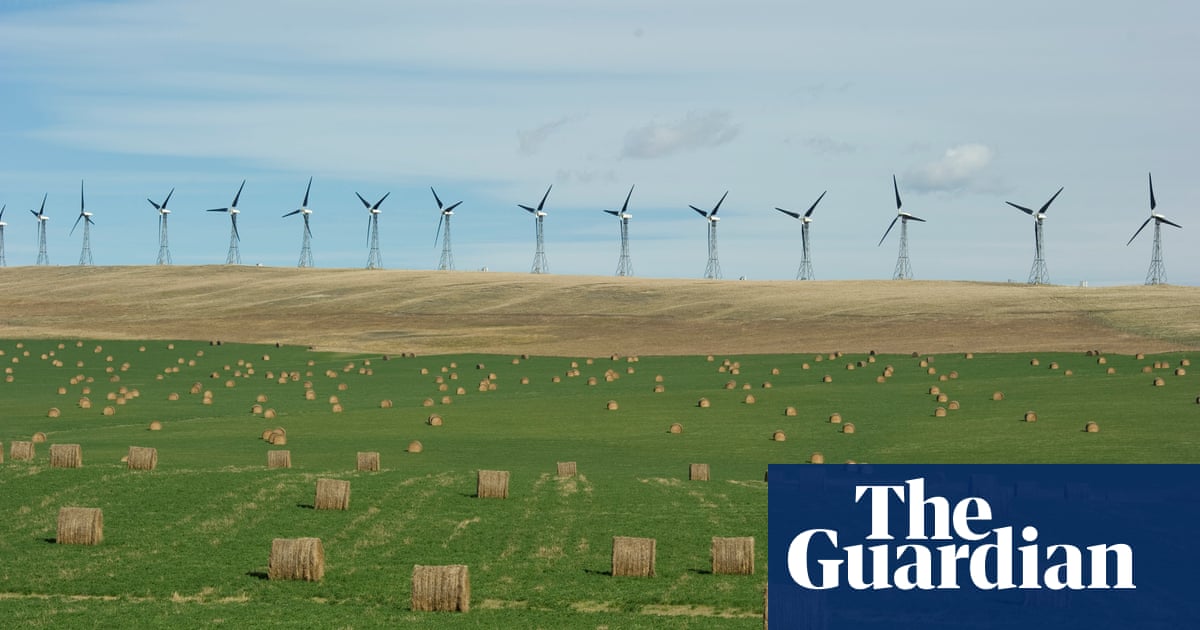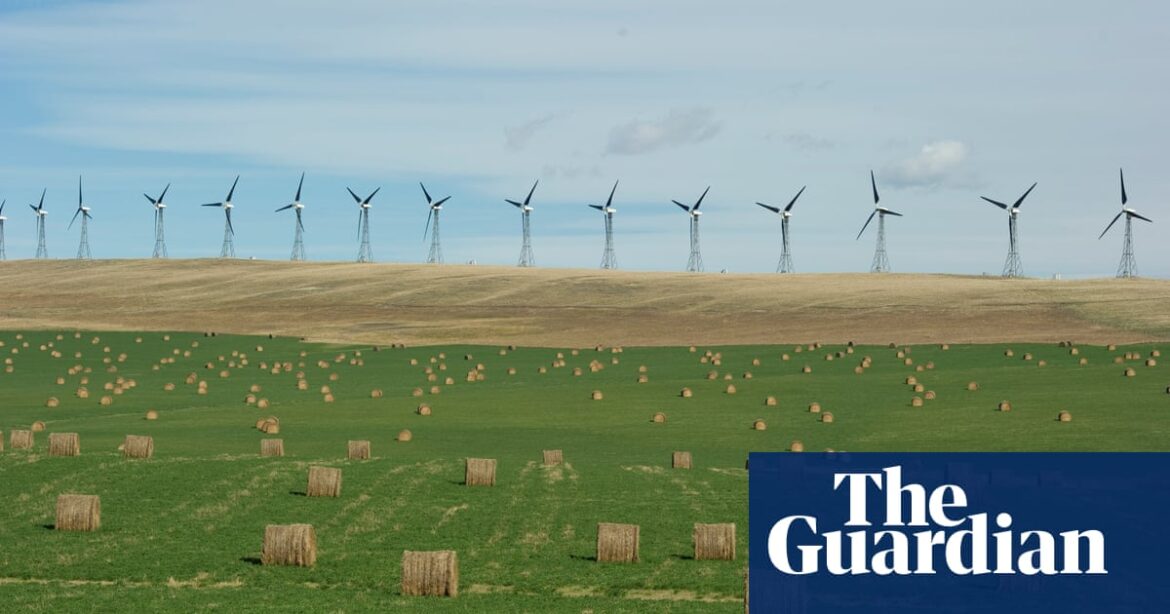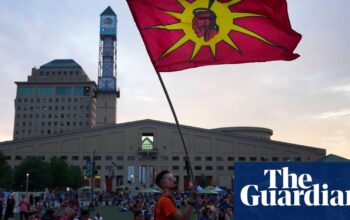
The province of Alberta is implementing restrictions on renewable energy developments on valuable agricultural land and restricting the placement of wind turbines to maintain unspoiled landscapes. This decision has caused a divide between the province and environmental groups advocating for green energy, as well as the companies investing in it.
The premier, Danielle Smith, and utilities minister, Nathan Neudorf, announced on Wednesday that there will be a decision following a controversial six-month ban on new renewable energy projects which is set to end on 29 February.
The moratorium declared by Alberta in August caused uncertainty for energy companies regarding potential investments worth billions of dollars. Despite having clear skies and an abundance of wind, the region was a leader in the development of new renewable projects in Canada.
About 33% of Alberta’s energy grid currently runs on renewable sources and the province has significantly reduced its dependence on coal at a much quicker pace than originally predicted.
However, Smith has opposed federal regulations that seek to lower the environmental impact of provincial power systems by limiting greenhouse gas emissions.
In the previous month, during an unusually cold winter, citizens of Alberta received urgent notifications urging them to save electricity due to the strain on the power grid caused by the extreme temperatures. Smith and others in the region used this event to question the practicality of relying on renewable sources for energy.
She presented the decision to restrict new projects on Wednesday as a means to promote responsible growth in the industry.
She informed the media that Alberta has been the top investor in renewable energy in the nation and will continue to hold that position.
Under its new rules, Alberta will ban renewable projects on private lands that it believes have “excellent or good irrigation capability” as well as land that can grow specialty crops.
Landowners have the option to request an exemption if they can demonstrate that their crops or livestock can thrive in the presence of the project. The developers of the project will be held accountable for any cleanup expenses and must obtain a bond from the government.
According to Smith, the latest regulations address past mistakes in the way responsibility was assigned for oil and gas companies. This has resulted in a significant crisis for the province as officials try to manage approximately 170,000 abandoned oil wells.
The premier stated that you cannot solve a problem by making it worse.
The province plans to create buffer zones of at least 35 kilometers (22 miles) to protect its expansive prairie landscapes and unobstructed views of the Rocky Mountains from wind turbines.
Neudorf acknowledged the absence of a “universal definition” for the term, but mentioned other countries such as the United Kingdom that have regulations regarding buffer zones.
According to Neudorf, the policy will also encompass the “height dimension” of wind turbines. However, other industries that cause physical changes to the land, like coal developments or clearcut logging, will be evaluated on an individual basis.
The government’s choice was met with doubt from analysts in the field of renewable energy. They cautioned that the lack of clarity in the new regulations could be considered a secondary “soft pause.”
According to Jorden Dye, director of the Business Renewables Centre-Canada, the lack of specifics in the three new regulatory frameworks has caused uncertainty for investors and developers regarding the impact on their projects. Instead of providing clarity, the government has created confusion, causing investors to seek assurance.
He referred to the newly established buffer zone of 35km as a “backdoor land ban,” which could potentially prevent any further projects in three-quarters of southern Alberta.
In summary, today’s statement adds to the already uncertain situation and prompts us to examine the potential loss of projects and investments in Alberta to other provinces. The lack of specific information further contributes to this situation and may result in a shift of investments to other areas.
Source: theguardian.com



